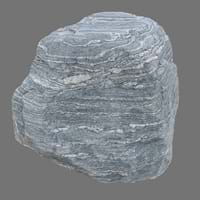Definition
Migmatite is typically a granitic rock within a metamorphic host rock which is composed of two intermingled but distinguishable components
Marl is an unconsolidated sedimentary rock consisting of clay and lime
Origin
Southern Alps, France
Unknown
Discoverer
Jakob Sederholm
Unknown
Etymology
From the Greek word migma which means a mixture
From Old French marle, from Late Latin marglia
Class
Metamorphic Rocks
Sedimentary Rocks
Sub-Class
Durable Rock, Medium Hardness Rock
Durable Rock, Soft Rock
Group
Not Applicable
Not Applicable
Other Categories
Coarse Grained Rock, Fine Grained Rock, Medium Grained Rock, Opaque Rock
Fine Grained Rock, Opaque Rock
Color
Black, Bluish - Grey, Brown, Brown- Black, Dark Greenish - Grey, Dark Grey to Black
Beige, Brown, Green, Grey, White
Durability
Durable
Durable
Appearance
Dull, Banded and Foilated
Rough and Dull
Interior Uses
Countertops, Flooring, Kitchens
Decorative Aggregates, Floor Tiles
Exterior Uses
As Building Stone, As Facing Stone
As Building Stone, Roof Tiles
Other Architectural Uses
Curbing
Curbing
Construction Industry
As Dimension Stone, Cement Manufacture, for Road Aggregate, Making natural cement
Cement Manufacture, Construction Aggregate, for Road Aggregate, Making natural cement, Raw material for the manufacture of mortar
Medical Industry
Not Yet Used
Not Yet Used
Antiquity Uses
Artifacts
Artifacts, Jewellery, Sculpture, Small Figurines
Commercial Uses
Cemetery Markers, Jewelry, Tombstones, Used to manufracture paperweights and bookends
Creating Artwork, Soil Conditioner
Types
Diatexites and Metatexites
Clay Marl ,Blue Marl, Red Marl, High Bank Marl, Shell Layer Marl, Under Shell Layer Marl, Sand Marl, Green Marl, Grey Marl and Clayey Marl
Features
Generally rough to touch, Is one of the oldest rock
Generally rough to touch, Is one of the oldest rock, Splintery, Very fine grained rock
Archaeological Significance
Monuments
Not Yet Used
Not Yet Used
Famous Monuments
Not Applicable
Not Applicable
Sculpture
Not Yet Used
Used
Famous Sculptures
Not Applicable
Data Not Available
Figurines
Not Yet Used
Used
Formation
Migmatites form by high temperature regional and thermal metamorphism of protolith rocks where rocks melt partially due to high temperature.
Marl forms when very fine-grained clay particles are deposited in water which settles at the bottom of water bodies and are compacted by overlying sediment; the water squeezes out and hence forming Marl rock.
Mineral Content
Biotite, Chlorite, Feldspar, Garnet, Graphite, Hornblade, Micas, Muscovite or Illite, Quartz, Quartzite, Silica, Zircon
Calcite, Clay, Dolomite, Gypsum, Micas, Pyrite, Quartz
Compound Content
Aluminium Oxide, NaCl, CaO, Carbon Dioxide, Iron(III) Oxide, FeO, Potassium Oxide, Magnesium Carbonate, MgO, MnO, Phosphorus Pentoxide, Silicon Dioxide, Titanium Dioxide
Aluminium Oxide, NaCl, CaO, Iron(III) Oxide, Silicon Dioxide
Types of Metamorphism
Burial Metamorphism, Cataclastic Metamorphism, Regional Metamorphism
Not Applicable
Types of Weathering
Biological Weathering, Chemical Weathering, Mechanical Weathering
Biological Weathering, Chemical Weathering
Types of Erosion
Chemical Erosion, Glacier Erosion, Water Erosion, Wind Erosion
Chemical Erosion, Coastal Erosion, Water Erosion, Wind Erosion
Grain Size
Medium to Fine Coarse Grained
Very fine-grained
Fracture
Irregular
Conchoidal
Porosity
Very Less Porous
Highly Porous
Luster
Dull to Pearly to Subvitreous
Dull
Cleavage
Poor
Not Available
Specific Gravity
2.65-2.75
2.2-2.8
Transparency
Opaque
Opaque
Density
Not Available
2.4-2.8 g/cm3
Resistance
Heat Resistant, Pressure Resistant
Heat Resistant, Impact Resistant
Deposits in Eastern Continents
Asia
China, India, Iran, Iraq, Kazakhstan, Kyrgyzstan, Mongolia, Russia
India, Pakistan, Russia
Africa
Cameroon, Ethiopia, Ghana, Kenya, Madagascar, Morocco, Mozambique, Namibia, Nigeria, Tanzania, Togo
Ethiopia, Kenya, Morocco, South Africa
Europe
Albania, Austria, Bosnia and Herzegovina, Finland, France, Georgia, Germany, Hungary, Italy, Kosovo, Monaco, Norway, Poland, Romania, Serbia, Slovakia, Slovenia, Sweden, Switzerland, Ukraine, United Kingdom
Austria, France, Germany, Greece, Italy, Romania, Scotland, Spain, Switzerland
Others
Not Yet Found
Not Yet Found
Deposits in Western Continents
North America
Canada, Costa Rica, Cuba, Mexico, Panama, USA
USA
South America
Argentina, Bolivia, Brazil, Chile, Colombia, Ecuador, Peru, Venezuela
Colombia, Ecuador, Peru
Deposits in Oceania Continent
Australia
New South Wales, New Zealand, Queensland, Victoria
New South Wales, Victoria, Western Australia










